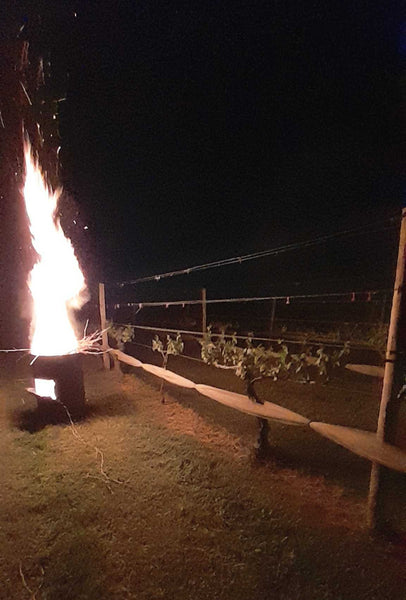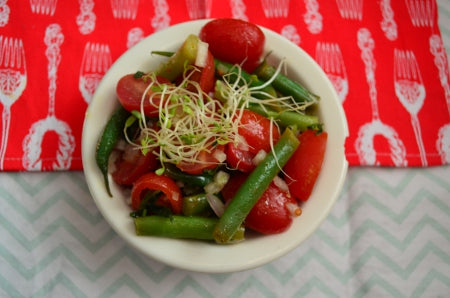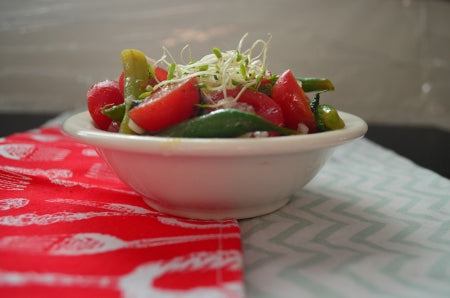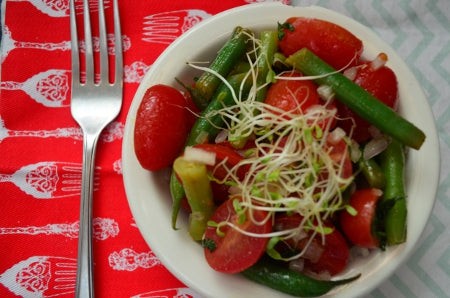Green Bean and Tomato Salad with Tarragon Dressing
TweetI have a revolving front door. People come and go regularly. And when they come, they come hungry. To stay ahead of the game, I prepare a few salads that can either be eaten as a side dish or by themselves.
Preparing a few easy salads in the beginning of the week, gives me versatility when it comes to feeding others as well as myself. As I dash around the house in the morning, it takes only a few additional moments to pack my lunch.
This salad utilizes tarragon, an herb that I rarely cook with. Tarragon tastes similar to anise or black licorice with the essence of sweetness. I enjoyed this for lunch and then decided to take it on a picnic - what a hit!
Green Bean and Tomato Salad with Tarragon Dressing
total time: 30 minutes yield: 4 servings
ingredients
- 2 lbs green beans (mixed colors if you can) trimmed and cut diagonally into bite size pieces
- ¼ cup olive oil
- 2 medium shallots
- 2 tbsp chopped tarragon
- 1 pint cherry tomatoes
- salt and pepper to taste
- 2 tbsp lemon juice
directions
- In a large pot of boiling salted water, cook the beans until just tender, about 4 minutes. Drain the beans and spread them on a large baking sheet to cool. Pat dry.
- In a small bowl, whisk the olive oil with the shallots and tarragon and season with salt and pepper. Place the beans and tomatoes in a large bowl, add the dressing and toss well. Transfer to a platter and serve.

Leave a comment
Comments will be approved before showing up.
Also in Unionville Grapevine

The Best Wines are the Ones You Fight For
We picked from 5am that day until a little past midnight, almost 19 hours of harvesting. The pick was only interrupted for bathroom breaks, pizza, and eventually some beers to keep morale high. I think the high morale beer was Miller High Life, although the details are fuzzy and it would only have been selected ironically. It was the most tenacious day I can recall in the field here. We picked nearly 10 tons from three different vineyards, finishing with the Pheasant Hill Chardonnay. We saran wrapped the bins during transport and weighing back at the winery as Ophelia's first raindrops splashed down just after midnight.





